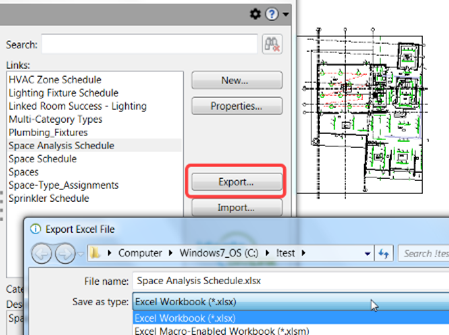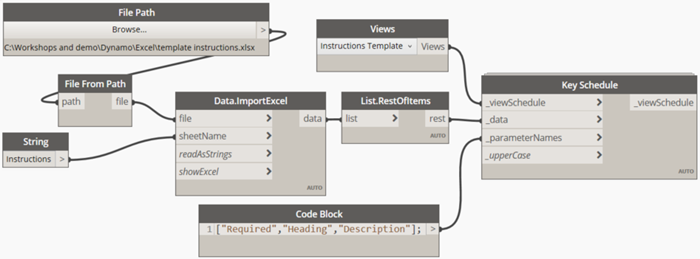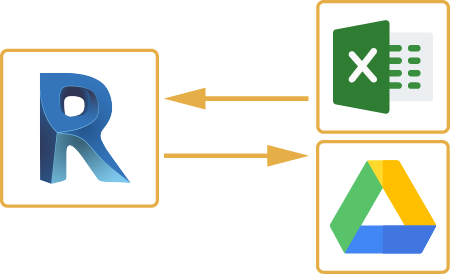Effectiveness Fulfills Precision: Check Out Essential Revit Tools
Wiki Article
Mastering the Art of Information Assimilation: How to Seamlessly Import Excel Data Into Revit
In this short article, we will certainly guide you through the procedure of mastering the art of data integration. Obtain prepared to prepare your Excel information easily and follow our step-by-step guide to import documents right into Revit. With our best practices, you'll accomplish information integration success in no time.Comprehending the Significance of Data Integration in Revit
Comprehending the significance of data integration in Revit is crucial for seamless importing of Excel documents. When you integrate data from Excel into Revit, it allows you to efficiently take care of and update info throughout the entire task. This assimilation guarantees that your design and construction process is accurate and up-to-date.By incorporating information, you can quickly import and upgrade parameters, timetables, and even geometry in Revit. This gets rid of the need for hands-on data entrance, conserving you time and minimizing the danger of mistakes. With Revit's data integration abilities, you can keep consistency and accuracy in your task, while likewise boosting partnership among group participants.

Checking Out the Excel Data Format for Revit Combination

In order to successfully integrate Excel documents into Revit, it is critical to ensure that the data is formatted appropriately. This includes appropriately classifying columns and rows, along with structuring the data in a means that is compatible with Revit's information schema. Revit uses details parameters and categories to arrange information, so it is very important to line up the Excel data with these specifications to make sure a smooth assimilation.
Furthermore, it is important to keep in mind that Revit only sustains particular data kinds when importing from Excel. These consist of text, numbers, and days. Any type of other data types, such as solutions or conditional format, will not be identified by Revit and might create concerns throughout the integration procedure.
Preparing Your Excel Information for Seamless Import Into Revit
To make certain a smooth integration procedure, you'll need to appropriately format and label the columns and rows in your Excel information before importing it right into Revit. Start by analyzing your Excel information and recognizing which rows and columns contain pertinent info for your Revit project.Next, guarantee that the information in each column is correctly formatted. For instance, if you have a column for dimensions, ensure that all measurements are continually formatted in the same systems of dimension. Revit counts on regular formatting to precisely translate and import data.
In addition, it is vital to look for any kind of empty cells or incongruities in your information. Revit might not have the ability to read or import data from cells that are vacant or contain mistakes. For that read more reason, it is advised to review your Excel data and tidy up any kind of incongruities prior to importing it into Revit.
Step-By-Step Overview to Importing Excel Files Into Revit
Once you've properly formatted and classified your Excel information, you can quickly import it into Revit by following this step-by-step overview. To begin, open Revit and browse to the "Insert" tab. revit add ins.Following, a dialog box will appear, allowing you to customize the import settings. Here, you can select the worksheet you intend to import, specify the array of cells to import, and choose the proper devices for your data. Once you've made your options, click "OK" to proceed.
Revit will certainly currently display a preview of your Excel data. Take a moment to make certain and assess the sneak peek that everything looks correct. If needed, you can make adjustments to the import settings by clicking on the "Settings" switch.
Finest Practices for Data Combination Success in Revit
Make certain you comply with these site web best techniques to guarantee successful assimilation of information in Revit. It is critical to arrange your information in Excel prior to importing it right into Revit. Be conscious of the devices and data kinds when mapping the data, as any kind of discrepancies can lead to mistakes in the combination process.An additional important practice is to regularly verify and update your information. As your task progresses, it is vital to maintain your Excel file approximately date with any kind of adjustments made in Revit. This will aid maintain the accuracy and consistency of your data across both systems. Furthermore, use data validation tools within Revit to recognize any errors or variances in the incorporated information.
Finally, it is suggested to establish a clear process for information integration. This includes specifying duties and responsibilities, establishing a communication channel in between team participants, and developing a routine cadence for data updates and testimonials. By following these best techniques, you can ensure a seamless and effective assimilation of information in Revit, eventually boosting the performance and accuracy of your job.
Final Thought
To conclude, grasping the art of information integration is crucial for seamless import of Excel files into Revit. Recognizing the importance of data integration in Revit is the primary step in the direction of effective integration. Exploring the Excel file layout for Revit combination assists in recognizing the constraints and needs. Preparing the Excel information properly and adhering to a step-by-step overview Home Page is essential for a smooth import process. By adhering to ideal practices, you can ensure data combination success in Revit and make one of the most out of your task.When importing information from Excel right into Revit, it is essential to understand the data layout and exactly how it can affect the integration procedure (revit plugins). Revit makes use of particular criteria and categories to organize information, so it is essential to align the Excel data with these criteria to ensure a smooth combination
Be conscious of the devices and data types when mapping the data, as any type of discrepancies can lead to errors in the combination process.
In addition, make usage of data validation tools within Revit to recognize any kind of errors or incongruities in the incorporated information.

Report this wiki page